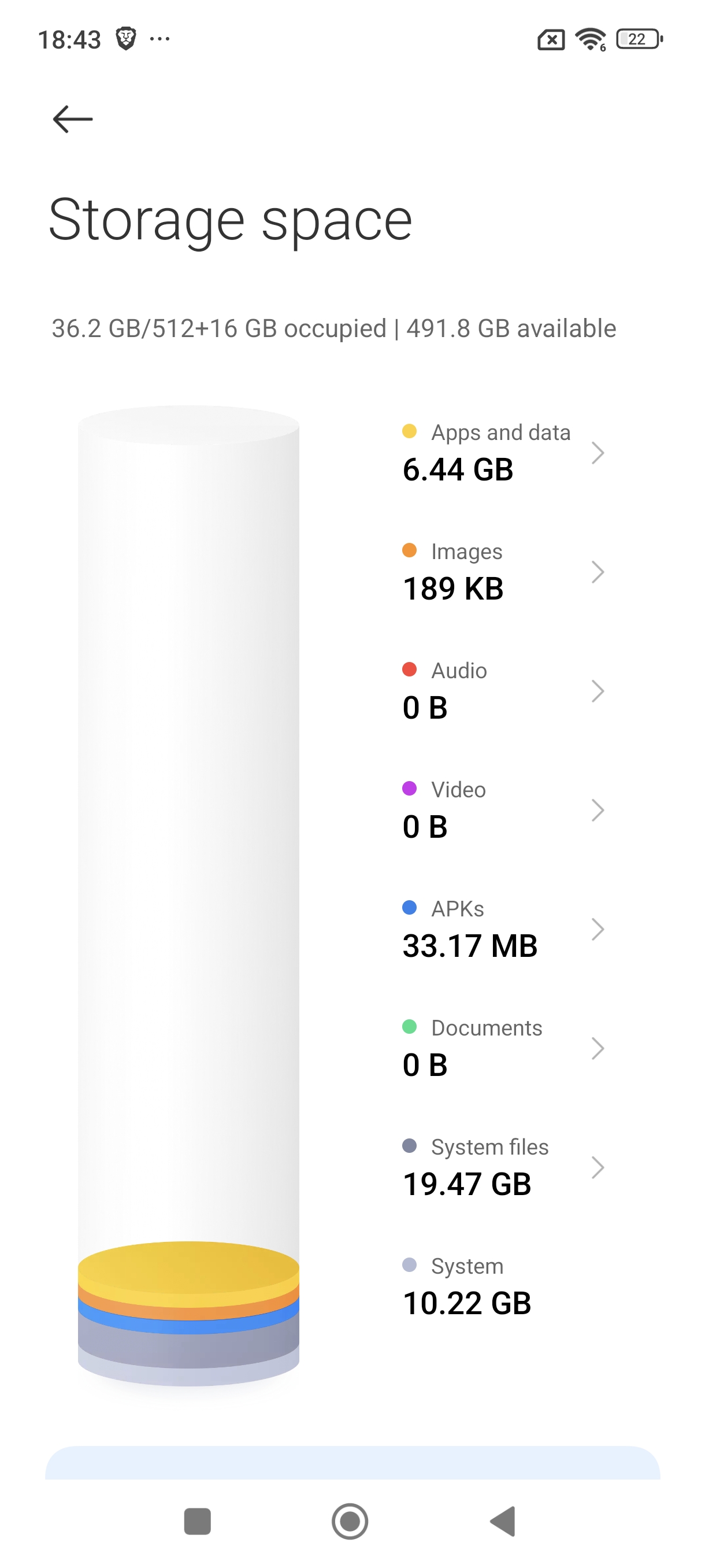, 5 min read
Upgrading Oppo Reno4 to Xiaomi 14T Pro
Original post is here eklausmeier.goip.de/blog/2024/11-25-upgrading-oppo-reno4-to-xiaomi-14t-pro.
Today I upgraded my Oppo Reno4 smartphone to a Xiaomi 14T Pro model. The "old" Oppo was still good, but the offered price for the 14T Pro was too good to say no.
I already own a Xiaomi Tablet 6, with which I am very happy. So changing from OnePlus / Oppo to Xiaomi was an easy choice. Add to that, that the Oppo phone did no longer receive kernel updates, and OnePlus / Oppo no longer sell their devices in Germany due to patent trolls.

Marketing descriptions for the Xiaomi 14T Pro are here.
The technical specs are given below.
| Type | Specification |
|---|---|
| Processor | MediaTek Dimensity 9300+ 4nm power-efficient manufacturing process CPU:1 x Cortex-X4, up to 3.4GHz 3 x Cortex-X4, up to 2.85GHz 4 x Cortex-A720, up to 2.0GHz GPU:Immortalis-G720 MC12 AIMediaTek NPU 790 (Generative AI) |
| Storage & RAM | 2GB, 512GB + 16GB Ultra Space UFS 4.0 + LPDDR5X 8533Mbps |
| Dimensions | Height: 160.4mm Width: 75.1mm Thickness: 8.39mm Weight: 209g |
| Display | Refresh rate 144 Hz AMOLED Resolution 2712 x 1220, 446ppi Touch sampling rate: Up to 480Hz |
| Camera | front:32MP main: Leica 50 MP ultra-wide: 12 MP digital zoom up to 30x mage formats captured: DNG,HEIF,JPEG |
| Video | 8K (7680x4320) video recording at 24fps, 30fps 4K (3840x2160) video recording at 24 fps, 30 fps, 60 fps 1080p (1920x1080) HD video recording at 30 fps, 60 fps 720p (1280x720) HD video recording at 30 fps Slow motion video: 720p 120fps, 240fps, 960fps 1080p 120fps,240fps,960fps |
| Battery | 5,000 mAh, 120 W HyperCharge 50 W wireless charging |
| NFC + Bluetooth | Yes |
| Network bands | 5G SA: n1/2/3/5/7/8/12/20/25/26/28/38/40/41/48/66/75/77/78 5G NSA: n1/3/5/7/8/20/28/38/40/41/66/75/77/78 4G: LTE FDD: B1/2/3/4/5/7/8/12/13/17/18/19/20/25/26/28/32/66 4G: LTE TDD: B38/39/40/41/42/48 3G: UMTS: B1/2/4/5/6/8/19 2G: GSM: B2/3/5/8 Supports 4x4 MIMO |
| WiFi | Wi-Fi 7 capability Dual band Simultaneous Multi-Link Operation Supports 2x2 MIMO, 8x8 Sounding for MU-MIMO, WiFi Direct Bluetooth 5.4, Dual-Bluetooth Supports AAC/LDAC/LHDC 4.0/LC3/ASHA/Auracast |
| Navigation | GPS: L1+L5 Galileo: E1+E5a+E5b, GLONASS: G1, Beidou, NavIC: L5 A-GPS supplementary positioning, Electronic compass, Wireless network, Data network, MPE |
| Audio | Stereo speakersSupports audio formats: MP3, FLAC, APE, AAC, OGG, WAV, AMR, AWB Hi-Res & Hi-Res Audio Wireless certification, Dolby Atmos |
| Vido | Supports video formats: MP4, MKV, WEBM, 3GP Supports HDR display when playing HDR10, HDR10+, Dolby Vision video content |
| Water resistant | IP68 |
| Sensor | Proximity sensor, Ambient light sensor, Accelerometer, Gyroscope, Electronic compass, IR blaster, Flicker sensor, X-axis linear vibration motor |
| Operating System | Xiaomi HyperOS |
Testing internet speed on https://fast.com:

The CPU according lscpu:
Architecture: aarch64
CPU op-mode(s): 64-bit
Byte Order: Little Endian
CPU(s): 8
On-line CPU(s) list: 0-7
Vendor ID: ARM
Model name: Cortex-A720
Model: 1
Thread(s) per core: 1
Core(s) per socket: 4
Socket(s): 1
Stepping: r0p1
CPU(s) scaling MHz: 15%
CPU max MHz: 2000.0000
CPU min MHz: 300.0000
BogoMIPS: 26.00
Flags: fp asimd evtstrm aes pmull sha1 sha2 crc32 atomics fphp asimdhp cpuid asimdrdm jscvt fcma lrcpc dcpop sha3 sm3 sm4 asimddp sha512 sve asimdfhm dit uscat ilrcpc flagm ssbs sb paca pacg dcpodp sve2 sveaes svepmull svebitperm svesha3 svesm4 flagm2 frint svei8mm svebf16 i8mm bf16 dgh bti ecv afp wfxt
Model name: Cortex-X4
Model: 1
Thread(s) per core: 1
Core(s) per socket: 4
Socket(s): 1
Stepping: r0p1
CPU(s) scaling MHz: 48%
CPU max MHz: 3400.0000
CPU min MHz: 550.0000
BogoMIPS: 26.00
Flags: fp asimd evtstrm aes pmull sha1 sha2 crc32 atomics fphp asimdhp cpuid asimdrdm jscvt fcma lrcpc dcpop sha3 sm3 sm4 asimddp sha512 sve asimdfhm dit uscat ilrcpc flagm ssbs sb paca pacg dcpodp sve2 sveaes svepmull svebitperm svesha3 svesm4 flagm2 frint svei8mm svebf16 i8mm bf16 dgh bti ecv afp wfxt
Vulnerability Gather data sampling: Not affected
Vulnerability Itlb multihit: Not affected
Vulnerability L1tf: Not affected
Vulnerability Mds: Not affected
Vulnerability Meltdown: Not affected
Vulnerability Mmio stale data: Not affected
Vulnerability Retbleed: Not affected
Vulnerability Spec rstack overflow: Not affected
Vulnerability Spec store bypass: Mitigation; Speculative Store Bypass disabled via prctl
Vulnerability Spectre v1: Mitigation; __user pointer sanitization
Vulnerability Spectre v2: Not affected
Vulnerability Srbds: Not affected
Vulnerability Tsx async abort: Not affected
Linux kernel after one HyperOS update according uname -a:
Linux localhost 6.1.57-android14-11-g2de3ba70f288-ab11985038 #1 SMP PREEMPT Tue Jun 18 13:21:55 UTC 2024 aarch64 Android
Storage is plentiful: 12 GB RAM, 512 GB SSD. As usual, some of this storage is used for internal purposes and therefore not directly available to you.
$ df -h | grep tmpfs
Filesystem Size Used Avail Use% Mounted on
tmpfs 5.4G 3.3M 5.4G 1% /dev
tmpfs 5.4G 38M 5.4G 1% /mnt
tmpfs 5.4G 28K 5.4G 1% /apex
$ df -h | grep storage
Filesystem Size Used Avail Use% Mounted on
/dev/fuse 481G 22G 458G 5% /storage/emulated

A good review of the smartphone is here: Verdict on the Xiaomi 14T Pro.
A video review by Mike Chudley of the camera of the Xiaomi phone is here:
Observations so far:
- The fingerprint sensor is reacting very quick, way quicker than the Oppo fingerprint sensor. That's good.
- There is no double tap to lock the phone, but you can use: Additional setting - Accessibility - Accessibility menu. With this you can activate something similar.
- The 5,000 mAh battery seems to deplete faster than the 4,000 mAh battery of the Oppo phone, i.e., the Oppo phone lasts longer. That is unexpected and bad.
- The Oppo phone (7.6mm) is clearly slimmer than the Xiaomi (8.39mm). It is also lighter: 209g vs. 172g.
Added 16-Feb-2025: Another video review by "Unbox Therapy".
Added 21-Jun-2025: A German review. Xiaomi 14T Pro im Test: Jetzt ist es endlich auch ein Preis-Hit!

